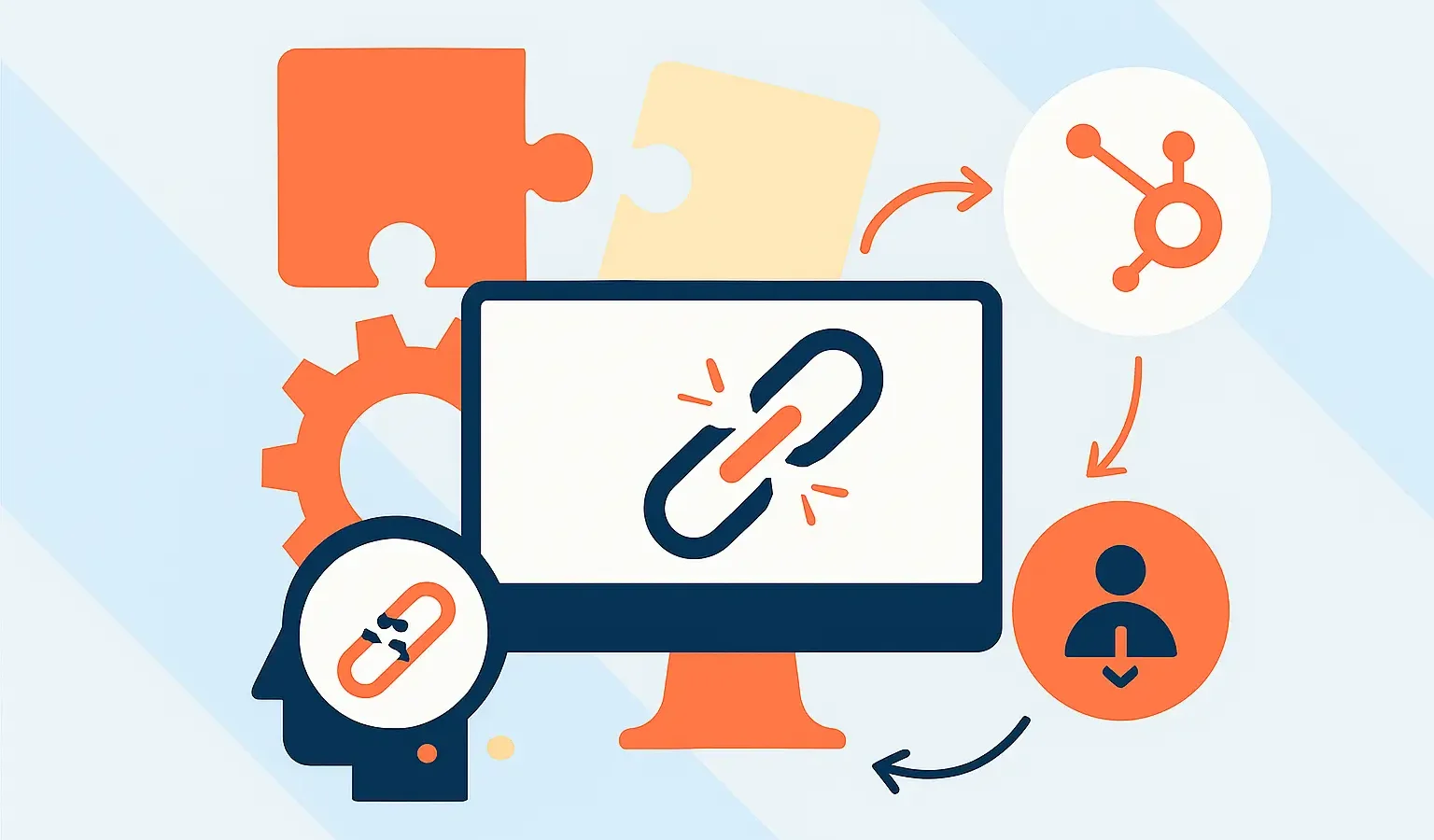Let’s talk about that server in the basement. Or maybe it’s that custom ERP built in 2008 by a developer named Dave who moved to a cabin in Vermont and hasn’t been seen since.
You know the one. It holds all your critical business data with inventory, historical pricing, complex billing rules, but it refuses to talk to anything else. It certainly doesn’t talk to HubSpot.
So, your team is stuck. Your sales reps are alt-tabbing between a green-screen terminal and a modern browser, manually copying and pasting data like it’s 1999.
The standard advice from consultants? “Just rip it out and buy something new.”
That is terrible advice.
Replacing a core legacy system is like performing a heart transplant while running a marathon. It’s expensive, dangerous, and you might not survive the procedure.
There is a better way. You don’t have to dump your legacy tech to get modern results. You just need to build a bridge.
Key Takeaways
- “Rip and Replace” is a trap: Completely ditching your old system is expensive, risky, and usually unnecessary.
- Integration is the bridge: You don’t need to choose between your reliable legacy database and HubSpot’s modern features. You can have both.
- Data needs to move: Trapped data is useless. Automated integration frees your historical data to drive modern marketing and sales.
- Modernize incrementally: Connect your systems to modernize your stack without the chaos of a full migration.
The “Rip and Replace” Trap
The tech industry loves to sell you on the idea of a “fresh start.” They tell you that legacy system integration is too hard, that old code is a liability, and that you should just move everything to a shiny new cloud ERP.
They forget to mention the cost. They forget to mention the downtime. And they definitely forget to mention that your old system actually does that one specific calculation perfectly, and the new SaaS platform can’t handle it without $50,000 in customization.
The Hidden Costs of Migration
When you try to modernize your legacy software stack by deleting it, you run into three massive problems:
- Loss of Institutional Knowledge: Your old system has 20 years of nuances built into it. A new system starts from zero.
- Operational Disruption: Implementations take months (or years). During that time, your team is fighting with new software instead of selling to customers.
- Feature Gaps: You often spend six months implementing a new system only to realize it’s missing critical features you took for granted in the old one.
Don’t throw the baby out with the bathwater. Keep the baby. Just buy a better stroller.
The Smart Alternative: Connect, Don’t Replace
The goal isn’t to kill the old system; the goal is to make it invisible to your sales and marketing teams.
Your sales team lives in HubSpot. They shouldn’t have to know how to query an SQL database, navigate a legacy mainframe interface, or memorize complex command-line codes. They just need the data.
By building a custom integration pipeline, you can connect your legacy CRM to HubSpot (or ERP, or proprietary database).
This approach allows you to operate in a “Hybrid State.”
- Back Office: Accounting and Operations keep using the legacy system they know and trust. It handles the heavy lifting (inventory management, manufacturing schedules, general ledger).
- Front Office: Sales and Marketing use HubSpot. They get a modern, mobile-friendly, intuitive interface.
How It Actually Works (Without the Jargon)
“But my system doesn’t have an API!”
We hear this objection in almost every discovery call. And honestly? It usually doesn’t matter.
Integration isn’t magic; it’s plumbing. Even if your legacy system is older than some of your employees, there is always a way to extract data from old systems and move it where it needs to go. We specialize in this kind of custom HubSpot integration process.
1. Direct Database Connections
Most legacy systems, no matter how old, run on a database. It might be SQL, Oracle, or something even more obscure. We can often hook a secure “listener” directly into those database tables. When a new order is added to the “Orders” table in your legacy ERP, our listener sees it and pushes that data to HubSpot immediately.
2. Flat File Transfers
If direct access isn’t an option, we go old school. If your system can export a CSV, XML, or Excel file to a secure folder (SFTP), we can build a script that watches that folder.
- Step A: Your system dumps a “Daily Inventory” file at 6:00 AM.
- Step B: Our integration picks it up, parses the data, and matches it to Products in HubSpot.
- Step C: By 6:05 AM, your sales reps know exactly what is in stock without leaving the CRM.
3. Custom API Wrappers
Sometimes, we build a modern API layer around your old architecture. Think of it like putting a universal translator on your old system. HubSpot speaks “Modern Web JSON,” and your system speaks “Ancient Code.” The wrapper translates between the two in real-time.
Unlocking HubSpot’s Superpowers with Legacy Data
Once you successfully connect your legacy CRM to HubSpot, you aren’t just viewing data; you are activating it. This is where the ROI happens.
1. Hyper-Personalized Marketing
If you only have marketing data, you send generic emails. If you have legacy data, you send revenue-generating emails.
- Generic: “Check out our new products.”
- Integrated: “Hey [Name], we noticed your warranty on [Specific Machine Model] expires in 30 days. Here is a 10% discount on the renewal.”
2. Smarter Sales Routing
Don’t route leads based on guesses. Route them based on value. If a prospect comes in who matches the profile of your high-value legacy customers (based on historical data), route them directly to your senior Account Executive.
3. Automated Health Checks
Use usage data from your legacy platform to predict churn. If a customer’s order volume drops by 20% year-over-year (data living in the legacy ERP), trigger a task in HubSpot for the Customer Success Manager to call them immediately.
A Strategic Roadmap for Integration
Ready to start? Don’t just call a developer. You need a plan.
Phase 1: The Audit Identifies exactly where your data lives. Map out the fields. Does “Customer Name” in the ERP match “Company Name” in HubSpot? (Spoiler: It rarely does). Define your “Source of Truth” for each data point.
Phase 2: The MVP (Minimum Viable Product) Don’t try to integrate everything at once. Start with one high-impact flow. Maybe it’s just syncing “Closed Won” deals from HubSpot to your ERP to automate billing. Get a quick win.
Phase 3: The Sync Build the pipeline. Test it in a sandbox environment. ensure that if bad data enters the legacy system, it doesn’t pollute HubSpot (and vice versa).
Phase 4: The Training Show your team the new reality. Teach them that they no longer need to check the green screen. Trust is the hardest part of integration; you have to prove the data is accurate.
Frequently Asked Questions
Is it secure to open up my legacy system?
Yes, if done correctly. Security is paramount when dealing with on-premise data. We employ robust security practices, including secure encrypted tunnels (VPNs), whitelisted IP addresses, and read-only access credentials to ensure that data flows securely without creating vulnerabilities.
Will this slow down my old system?
It shouldn’t. We typically schedule heavy data pulls (like full historical syncs) during off-hours. Real-time syncs are usually lightweight and have negligible impact on server performance.
Why not just use a pre-built connector from the HubSpot Marketplace?
Marketplace apps are great for standard SaaS-to-SaaS connections (like Salesforce to HubSpot). They rarely work for custom, on-premise, or legacy systems because your database schema is unique to your business. There is no “plug-and-play” for a system built in 2005.
Can I eventually replace the legacy system later?
Absolutely. In fact, integration makes replacement easier. By decoupling the frontend (HubSpot) from the backend (Legacy), you can eventually swap out the backend without disrupting the sales team. You are essentially modularizing your stack.
The Bottom Line
You don’t have to be held hostage by your old software. And you certainly don’t have to bankrupt the company trying to replace it.
Modernization isn’t about having the newest tools; it’s about making your tools work together. By focusing on legacy system integration, you extend the life of your current investments while unlocking the power of HubSpot.
Stop copying and pasting. Stop fearing the “rip and replace.” Start building bridges.
Ready to make your old systems talk to your new ones?
Schedule a conversation with us. Let’s see what Dave built and how we can connect it.


